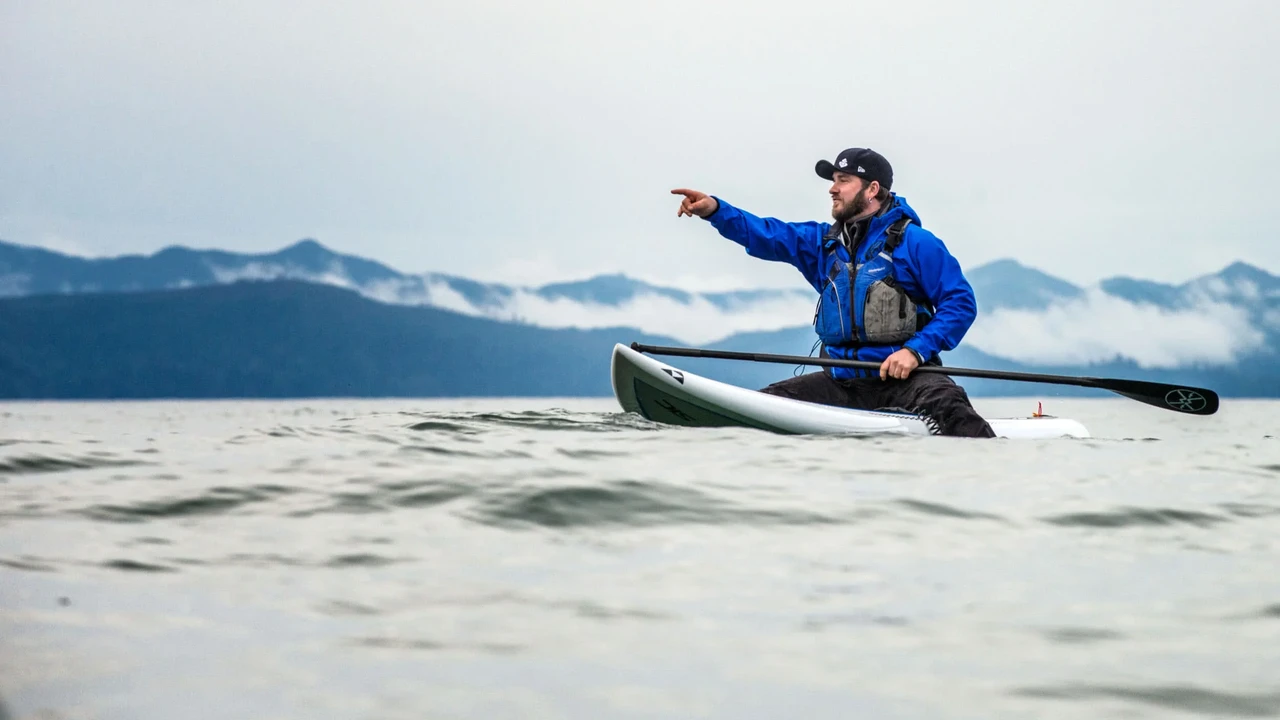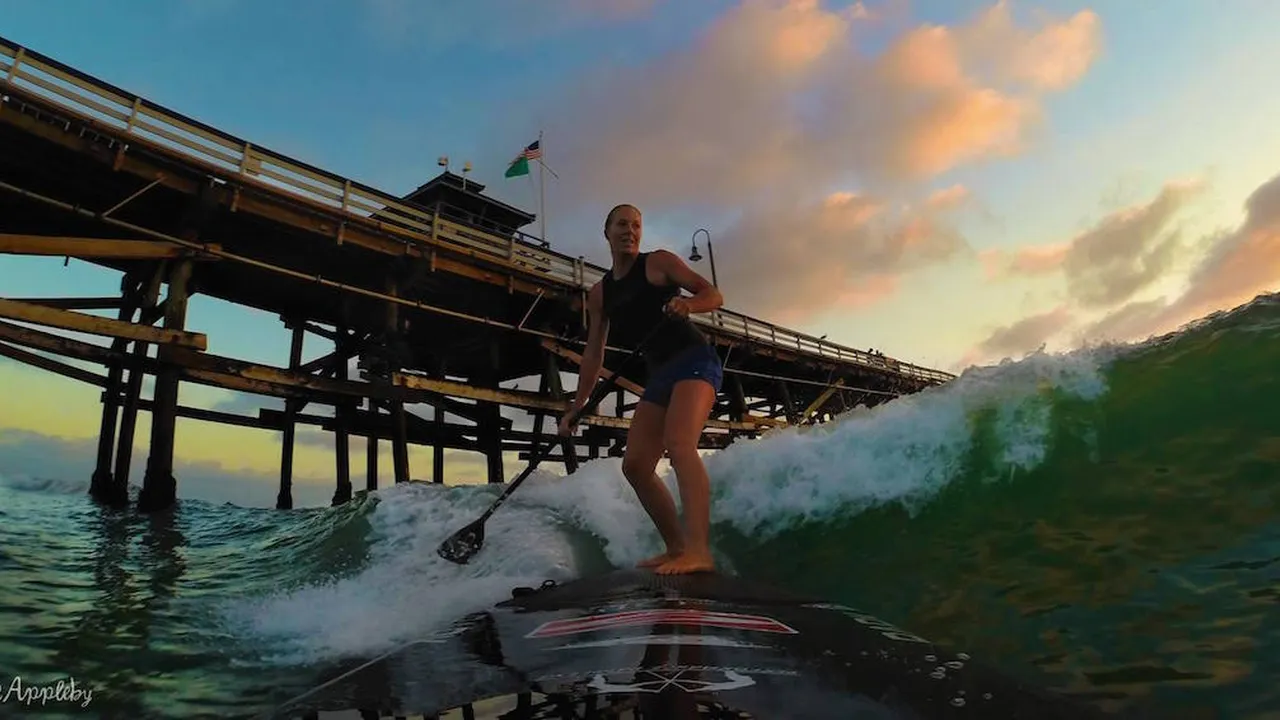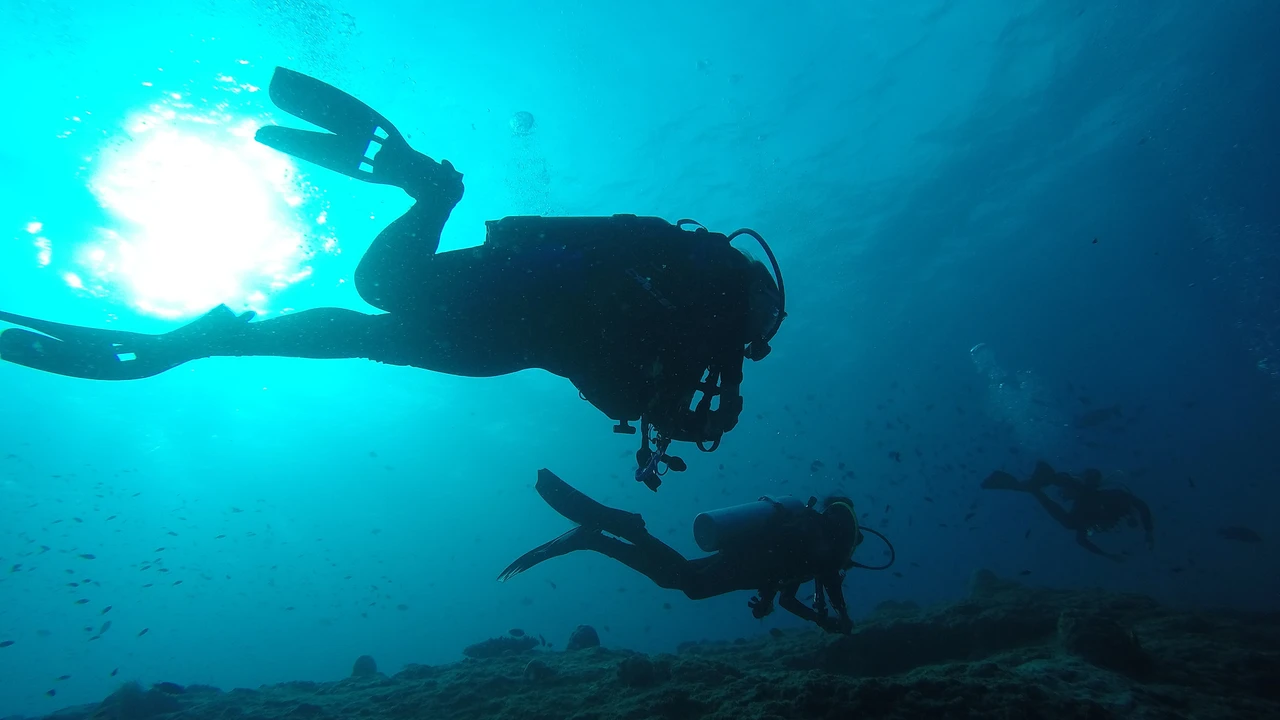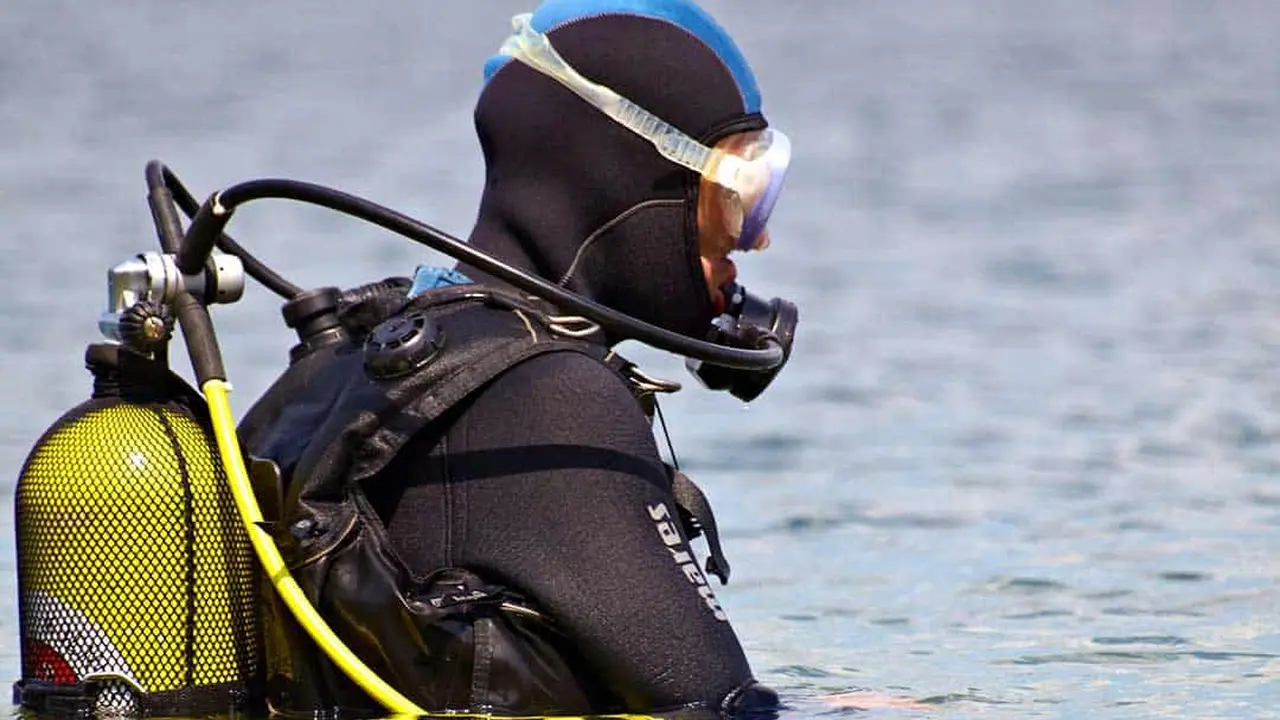Best Time to SUP on the West Coast

Understanding West Coast Stand-Up Paddleboarding Seasons
So, you're thinking about stand-up paddleboarding (SUP) on the West Coast? Smart choice! From the rugged beauty of the Pacific Northwest to the sun-kissed shores of Southern California, the West Coast offers a diverse range of paddling experiences. But before you grab your board and head out, it's crucial to understand the seasonal variations that impact SUP conditions. Let's dive in!
Spring SUP Adventures on the West Coast
Spring on the West Coast is a time of awakening. The days are getting longer, the temperatures are rising (slowly but surely!), and the landscape is bursting with new life. However, the water temperatures are still relatively cool, especially in the northern regions. This means you'll definitely want to consider a wetsuit or drysuit for comfortable paddling.
Pros:
- Fewer crowds compared to summer.
- Wildflowers in bloom along the coastline.
- Good opportunities for wildlife viewing (e.g., migrating whales).
Cons:
- Cooler water temperatures requiring proper thermal protection.
- Potential for spring storms and unpredictable weather.
- Some locations may still be experiencing runoff from winter snowmelt, affecting water clarity.
Summer SUP Bliss on the West Coast
Ah, summer! This is prime time for SUP on the West Coast. The water is warmer, the sun is shining (mostly!), and the beaches are buzzing with activity. This is when you'll find the most consistent paddling conditions and the widest range of SUP opportunities.
Pros:
- Warmest water temperatures of the year.
- Long daylight hours for extended paddling sessions.
- Numerous SUP events and rentals available.
Cons:
- Larger crowds at popular SUP locations.
- Higher prices for rentals and accommodations.
- Potential for afternoon winds, especially in coastal areas.
Autumn SUP Serenity on the West Coast
Autumn is a hidden gem for SUP on the West Coast. The crowds have thinned out, the water is still relatively warm (especially in early autumn), and the scenery is simply stunning as the leaves begin to change color. This is a great time to enjoy a more peaceful and contemplative paddling experience.
Pros:
- Fewer crowds than summer.
- Beautiful fall foliage along the coastline.
- Often calmer waters and more stable weather conditions.
Cons:
- Water temperatures gradually cooling down.
- Shorter daylight hours.
- Potential for early autumn storms.
Winter SUP Challenges on the West Coast
Winter on the West Coast is not for the faint of heart when it comes to SUP. The water is cold, the weather is unpredictable, and the conditions can be challenging. However, for experienced paddlers who are properly equipped, winter can offer a unique and rewarding SUP experience. Think solitude, dramatic landscapes, and the thrill of conquering the elements.
Pros:
- Complete solitude and a sense of adventure.
- Opportunity to witness dramatic winter storms.
- Potential for spotting winter wildlife (e.g., seals, sea lions).
Cons:
- Extremely cold water temperatures requiring a drysuit.
- Unpredictable weather and strong winds.
- Limited daylight hours.
- Potential for dangerous conditions due to large waves and strong currents.
Essential SUP Gear for West Coast Paddling
No matter what time of year you choose to SUP on the West Coast, having the right gear is essential for safety and enjoyment. Here's a breakdown of some key items:
Choosing the Right Stand-Up Paddleboard for West Coast Waters
The type of SUP board you choose will depend on your skill level, the type of paddling you plan to do, and the conditions you'll be facing. Here's a quick overview:
- All-Around Boards: These are the most versatile type of SUP board, suitable for beginners and a variety of paddling conditions. They typically have a rounded nose and a stable platform.
- Touring Boards: These boards are designed for longer distances and faster speeds. They have a pointed nose and a narrower profile.
- Surf SUPs: These boards are designed for riding waves. They are shorter and more maneuverable than all-around or touring boards.
- Inflatable SUPs: These boards are portable and easy to store. They are a good option for travel and for paddlers who have limited storage space.
Product Recommendation: For an all-around board perfect for beginners and intermediate paddlers, I recommend the Isle Explorer Inflatable Stand Up Paddle Board. It's stable, durable, and easy to transport. It retails for around $700-$900 depending on sales and includes a paddle, pump, and carrying bag.
The Importance of a Quality SUP Paddle
Your paddle is your engine on the water, so it's important to choose one that is comfortable, lightweight, and efficient. Paddles come in a variety of materials, including aluminum, fiberglass, and carbon fiber.
- Aluminum Paddles: These are the most affordable option, but they are also the heaviest.
- Fiberglass Paddles: These paddles are lighter than aluminum paddles and offer a good balance of performance and affordability.
- Carbon Fiber Paddles: These are the lightest and most expensive paddles. They offer the best performance and are ideal for serious paddlers.
Product Recommendation: For a lightweight and durable paddle, I recommend the Aqua Bound Manta Ray Carbon Paddle. It's adjustable, comfortable to grip, and provides excellent power transfer. Expect to pay around $250-$350 for this paddle.
Staying Warm with Appropriate SUP Apparel
As mentioned earlier, water temperatures on the West Coast can be cool, even in the summer. It's crucial to dress appropriately to avoid hypothermia.
- Wetsuits: Wetsuits provide insulation by trapping a thin layer of water between your skin and the suit. They are a good option for milder temperatures.
- Drysuits: Drysuits keep you completely dry, even if you fall into the water. They are essential for paddling in cold water.
- Rash Guards: Rash guards provide sun protection and can also help to prevent chafing.
- Water Shoes: Water shoes protect your feet from rocks, shells, and other hazards.
Product Recommendation: For cold water paddling, the O'Neill Sector 5mm Drysuit is a top choice. It's durable, waterproof, and provides excellent thermal protection. This is a significant investment, typically costing between $600-$900. For warmer conditions, a Billabong 3/2mm Wetsuit provides a good balance of warmth and flexibility, priced around $150-$250.
Essential Safety Gear for West Coast SUP
Safety should always be your top priority when stand-up paddleboarding. Here are some essential safety items:
- Personal Flotation Device (PFD): A PFD is required by law in many areas. Choose a comfortable and well-fitting PFD.
- Leash: A leash connects you to your board, preventing it from drifting away if you fall into the water.
- Whistle: A whistle can be used to signal for help in an emergency.
- Waterproof Phone Case: A waterproof phone case allows you to call for help if needed.
- Sunscreen: Protect your skin from the sun's harmful rays.
- Hat and Sunglasses: Protect your face and eyes from the sun.
Top West Coast SUP Destinations and Their Ideal Seasons
The West Coast is brimming with amazing SUP locations. Here are a few highlights and the best times to visit:
Stand-Up Paddleboarding in Southern California Year-Round
Southern California offers year-round SUP opportunities, thanks to its mild climate. Popular spots include:
- La Jolla Shores: Gentle waves and clear water make this a great spot for beginners. Best in summer and fall.
- Newport Harbor: Calm waters and beautiful scenery make this a popular spot for recreational paddling. Best in summer and fall.
- Santa Monica Bay: A wide sandy beach and consistent waves make this a great spot for surfing SUP. Best in fall and winter for surf.
Exploring the Pacific Northwest by SUP
The Pacific Northwest offers stunning scenery and challenging paddling conditions. Popular spots include:
- Lake Tahoe: Crystal-clear water and stunning mountain views make this a must-visit SUP destination. Best in summer.
- Puget Sound: Explore the numerous islands and bays of Puget Sound. Best in summer and early fall.
- Columbia River Gorge: Strong winds and challenging currents make this a spot for experienced paddlers only. Best in summer with careful planning.
SUP Adventures in Northern California
Northern California offers a mix of coastal and inland paddling opportunities. Popular spots include:
- Monterey Bay: Explore the kelp forests and spot marine wildlife. Best in summer and fall.
- Lake Shasta: A large reservoir with numerous coves and inlets, perfect for exploring. Best in summer.
- San Francisco Bay: Paddle under the Golden Gate Bridge and explore the city skyline. Best in summer with careful attention to tides and currents.
SUP Product Comparison: Inflatable vs Hard Boards
Let's delve into a more detailed comparison between inflatable and hard SUP boards, as this decision significantly impacts your West Coast paddling experience.
Inflatable SUP Boards: Portability and Convenience
Inflatable SUPs (iSUPs) have exploded in popularity, and for good reason. Their primary advantage is portability. You can deflate them, roll them up, and easily transport them in the trunk of a car or even check them on an airplane. This opens up SUP opportunities in remote locations that would be inaccessible with a hard board.
Pros:
- Portability: Easily transported and stored.
- Durability: Surprisingly durable, often made with military-grade PVC.
- Stability: Many iSUPs are very stable, especially wider models.
- Affordability: Entry-level iSUPs can be more affordable than hard boards.
Cons:
- Performance: Generally slower and less responsive than hard boards.
- Inflation Time: Requires time and effort to inflate.
- Flex: Can flex slightly, especially in choppy water.
Product Recommendation: The NRS Thrive 10.8 Inflatable SUP is a fantastic all-around iSUP known for its durability and stability. It's a bit pricier (around $900-$1100), but the quality is evident.
Hard SUP Boards: Performance and Responsiveness
Hard SUPs, typically made from fiberglass, epoxy, or carbon fiber, offer superior performance and responsiveness on the water. They glide more efficiently, track straighter, and are more stable in choppy conditions.
Pros:
- Performance: Faster, more responsive, and better for touring and surfing.
- Stability: Generally more stable than iSUPs, especially in rough water.
- Durability: Highly durable, although susceptible to dings and scratches.
Cons:
- Portability: Difficult to transport and store.
- Cost: Generally more expensive than iSUPs.
- Storage: Requires significant storage space.
Product Recommendation: The Surftech Balboa Stand Up Paddleboard is a popular choice for its versatility and durability. It's a great all-around hard board that performs well in various conditions. Expect to pay around $1200-$1500 for this board.
Detailed Guide to SUP Safety on the West Coast
Let's expand on the crucial topic of SUP safety, focusing on the unique challenges presented by West Coast waters.
Understanding Tides and Currents for Safe SUP Paddling
Tides and currents can significantly impact SUP conditions, especially in coastal areas. Always check the tide charts before heading out and be aware of the direction and strength of the currents.
- Tidal Currents: The movement of water caused by the rise and fall of the tide. Can be very strong in narrow channels and inlets.
- Longshore Currents: Currents that run parallel to the shoreline. Can make it difficult to paddle back to your starting point.
- Rip Currents: Strong, narrow currents that flow away from the shore. Can be very dangerous for swimmers and paddlers. If caught in a rip current, paddle parallel to the shore until you are out of the current.
Navigating West Coast Weather Conditions While SUPing
West Coast weather can be unpredictable. Be prepared for changing conditions and always check the forecast before heading out. Pay attention to wind speed, wave height, and visibility.
- Wind: Strong winds can make it difficult to paddle and can also create choppy conditions. Avoid paddling in strong winds, especially offshore winds.
- Waves: Large waves can be dangerous for inexperienced paddlers. Choose a sheltered location if waves are high.
- Fog: Fog can reduce visibility and make it difficult to navigate. Use a GPS or compass if paddling in foggy conditions.
Choosing the Right SUP Leash for Different West Coast Environments
Your leash is your lifeline, so choosing the right one is crucial. There are different types of leashes for different paddling environments.
- Coiled Leashes: These leashes are shorter and less likely to get tangled. They are a good option for flatwater paddling.
- Straight Leashes: These leashes are longer and provide more freedom of movement. They are a good option for surfing SUP.
- Quick-Release Leashes: These leashes have a quick-release mechanism that allows you to detach from your board in an emergency. They are essential for paddling in areas with strong currents or potential for entanglement.
Dealing with Marine Wildlife Encounters During West Coast SUP Trips
The West Coast is home to a diverse range of marine wildlife, including seals, sea lions, whales, and dolphins. While these animals are generally harmless, it's important to be aware of their presence and to avoid disturbing them.
- Maintain a safe distance: Avoid approaching marine wildlife too closely.
- Do not feed them: Feeding marine wildlife can disrupt their natural behavior.
- Be aware of your surroundings: Pay attention to any signs of marine wildlife activity.
- Report any injured or distressed animals: Contact local authorities if you see an injured or distressed marine animal.
Advanced SUP Techniques for West Coast Waters
For those looking to elevate their SUP game on the West Coast, mastering some advanced techniques is essential.
Efficient Paddling Strokes for Touring and Distance SUP
Efficient paddling strokes are crucial for conserving energy and covering longer distances. Focus on using your core muscles and rotating your torso with each stroke.
- Forward Stroke: The basic paddling stroke for moving forward. Reach forward with your paddle, plant the blade fully in the water, and pull the paddle back along the side of your board.
- Sweep Stroke: Used for turning your board. Sweep the paddle in a wide arc from the nose to the tail of your board.
- Reverse Stroke: Used for stopping or backing up. Plant the paddle blade behind you and pull forward.
SUP Surfing Techniques for Riding West Coast Waves
SUP surfing can be an exhilarating experience, but it requires different techniques than flatwater paddling. Focus on positioning yourself correctly, paddling into the wave, and using your paddle for balance and control.
- Stance: Maintain a wide stance with your feet shoulder-width apart.
- Paddling into the wave: Paddle hard to match the speed of the wave.
- Using your paddle: Use your paddle to steer and maintain balance.
Navigating Chop and Wind on a Stand-Up Paddleboard
Choppy water and wind can make SUP paddling more challenging. Here are some tips for navigating these conditions:
- Bend your knees: Bending your knees will lower your center of gravity and make you more stable.
- Paddle into the wind: Paddle into the wind to maintain control.
- Use a smaller paddle: A smaller paddle will be easier to control in windy conditions.
SUP Yoga and Fitness on the West Coast
Stand-up paddleboarding provides a unique platform for yoga and fitness activities, adding an extra layer of challenge and enjoyment.
Benefits of SUP Yoga and Fitness
SUP yoga and fitness offer numerous benefits, including:
- Improved balance and core strength: Maintaining balance on a SUP board engages your core muscles and improves your overall balance.
- Increased flexibility: The unstable surface of the board requires you to engage your muscles in new ways, which can improve your flexibility.
- Stress reduction: Being on the water and surrounded by nature can be incredibly relaxing and stress-reducing.
- Unique workout experience: SUP yoga and fitness offer a unique and challenging workout experience.
Popular SUP Yoga Poses for West Coast Paddlers
Here are a few popular SUP yoga poses to try:
- Downward-Facing Dog: A classic yoga pose that stretches the entire body.
- Warrior Poses: Strengthen your legs and improve your balance.
- Tree Pose: Improves balance and focus.
- Savasana (Corpse Pose): A relaxing pose that allows you to fully relax and integrate the benefits of your practice.
The Future of Stand-Up Paddleboarding on the West Coast
Stand-up paddleboarding continues to evolve, and the West Coast is at the forefront of this evolution.
Emerging Trends in SUP Equipment and Technology
Some emerging trends in SUP equipment and technology include:
- Electric SUPs: Electric SUPs provide an extra boost of power, making it easier to paddle long distances or against the wind.
- Hydrofoil SUPs: Hydrofoil SUPs lift the board above the water, allowing you to glide effortlessly.
- Smart SUPs: Smart SUPs are equipped with sensors that track your performance and provide feedback.
Sustainable SUP Practices for Protecting West Coast Ecosystems
As SUP becomes more popular, it's important to practice sustainable paddling practices to protect West Coast ecosystems.
- Avoid disturbing wildlife: Maintain a safe distance from marine wildlife and avoid disturbing their habitat.
- Pack out all trash: Do not leave any trash behind.
- Use reef-safe sunscreen: Avoid using sunscreen that contains harmful chemicals that can damage coral reefs.
- Support local conservation efforts: Donate to local organizations that are working to protect West Coast ecosystems.
Best Time to SUP on the West Coast Conclusion
Ultimately, the best time to SUP on the West Coast depends on your personal preferences, skill level, and tolerance for cold water. Whether you're seeking the warm sunshine of summer, the tranquility of autumn, or the solitude of winter, the West Coast offers a SUP adventure for everyone. Just remember to prioritize safety, choose the right gear, and respect the environment. Now get out there and explore!
:max_bytes(150000):strip_icc()/277019-baked-pork-chops-with-cream-of-mushroom-soup-DDMFS-beauty-4x3-BG-7505-5762b731cf30447d9cbbbbbf387beafa.jpg)






